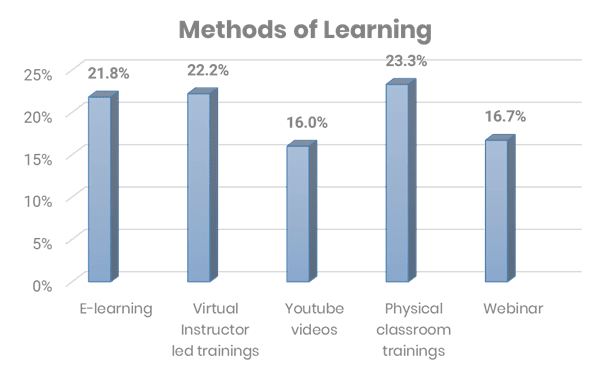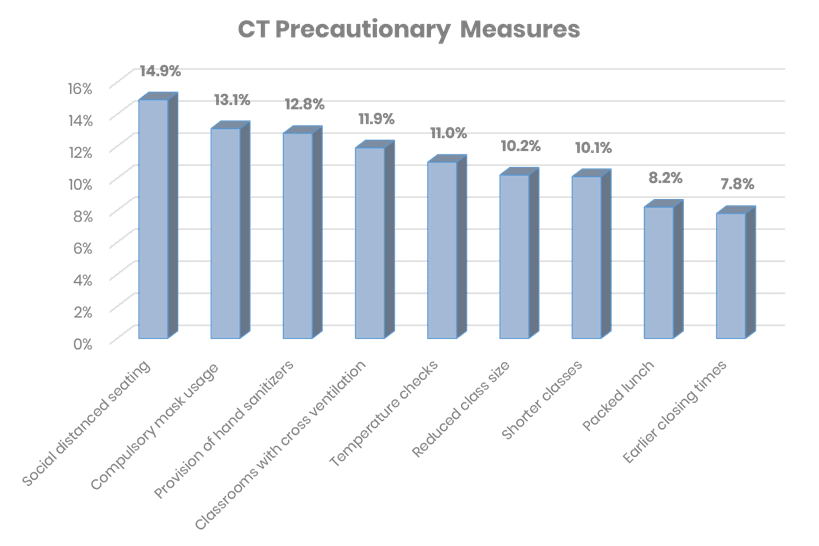The year 2020 started like any other year, with plans for learning & development (L&D) designed by individuals and organisations alike for themselves and their staff respectively. However, the worldwide shutdown caused by the emergence of the Covid-19 pandemic brought about unexpected disarray to all L&D plans, resulting in organisations having to either put their L&D plans on hold or switch entirely to virtual trainings.
Now, as the world slowly re-emerges from the lockdown and other restrictions into what is being considered as the new normal, organisations are frantically scrambling to meet all their L&D goals in the last quarter of the year. Requests for virtual instructor-led trainings (VILT) at Phillips Consulting Limited (pcl.) have increased by almost 70%, and it is assumed that the same situation applies to other training institutions. As the growth in VILT requests is positive news for training institutions, it begs the question “What does the future hold for classroom training?”
Classroom training, once the only option that came to mind when the topic of training emerged, is no longer mentioned by organisations. It has found itself side-lined by its more convenient and much safer counterpart, virtual training. With workplaces opening their doors to staff returning to the office, some in full capacity while others with a more staggered arrangement, the following questions arise: When will organisations return to classroom trainings? What factors would encourage individuals to be more willing to attend classroom trainings? To answer these questions, we surveyed a sample size of 150 individuals to understand what their learning process has been like since the lockdown in March and their thoughts on the re-emergence of classroom training.
Overall, over 77% of the respondents had continued learning after the lockdown had commenced through E-learning, Webinars and VILTs on Teams, Zoom, Google Meet, etc. However, the remaining 23% with an absence of learning in their routine identified a lack of motivation, reduced work performance and a disruption to their career goals as some of the effects to their work. The lack of a development plan, along with the lockdown, adversely affected their work life.
Even though most individuals have adopted a virtual learning platform, when asked to rank several modes of learning, 23% of respondents ranked physical classroom training as their most preferred method of learning, followed closely by the virtual training options. Hence, there is an interest in both physical and virtual training methods, with the virtual methods superseding the physical due to the current circumstance.
The factors that make physical training appealing are; the high level of engagement with other participants and the facilitator which allows room for more fluid conversations, classroom activities, and in some instances, the ability to network with other business professionals while outside the office environment. This was confirmed when 81% of respondents chose ‘Engagement with participants and facilitators’ when asked what made physical trainings valuable. Physical trainings also provide a learning environment that allows participants to focus on the training, ensuring optimum value is achieved. Nonetheless, 84% enjoyed the comfort of learning from their home that virtual trainings provided. Hence, both modes have their pros and cons.
In the end, it is expected that classroom training will slowly make its way back into the scene, so it is important that training institutions prepare for this moment if they have not done so already. The below graph shows in order of importance the factors that our respondents voted as necessary for them to confidently attend a classroom training (CT), with a social distancing seating arrangement taking top priority and earlier closing times having the least priority. About 83% of respondents were ready to commence classroom trainings as long as these measures were put in place, which means that with the right focus and action by training institutions, classroom trainings can be conducted as there are individuals ready to attend.
In conclusion, despite the convenience and safety of virtual trainings, individuals are beginning to crave face-to-face interaction and engagement in a learning capacity. Therefore, the future of training may require a hybrid model, whereby instead of creating totally physical or virtual classes, trainings will be designed to combine both methods to allow a best-of-both-worlds situation. Hence, participants are provided with the opportunity to experience the level of engagement attained from physical training while still partly being able to learn from the convenience of their homes. Classroom training is re-emerging, so all possible precautionary measures should be put in place to enable a seamless transition for when it happens.
Written by:

Matinat Mas’ud-Nuhu
Analyst
![]()


